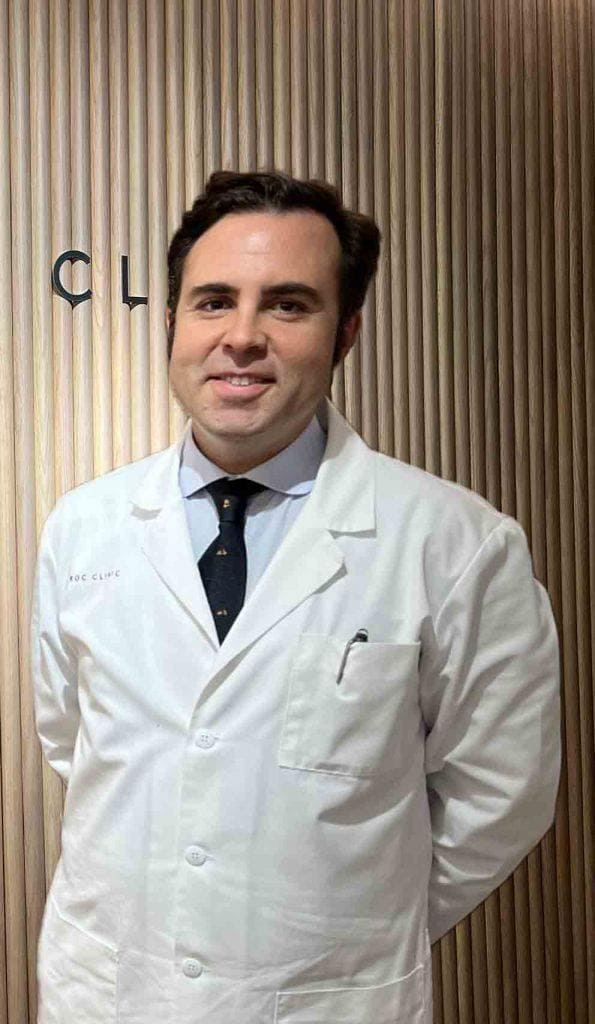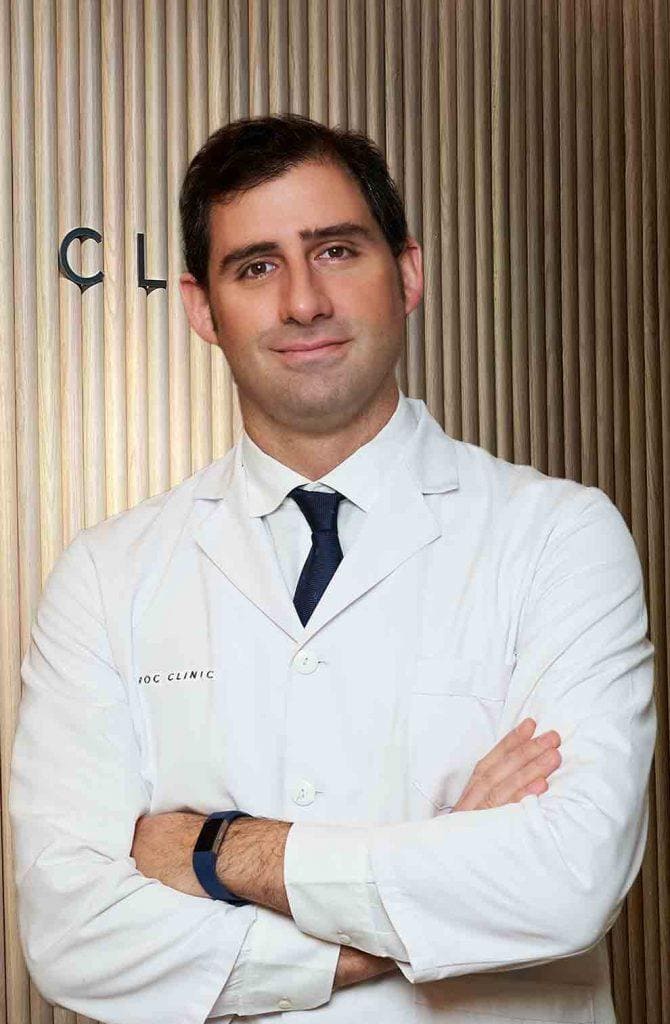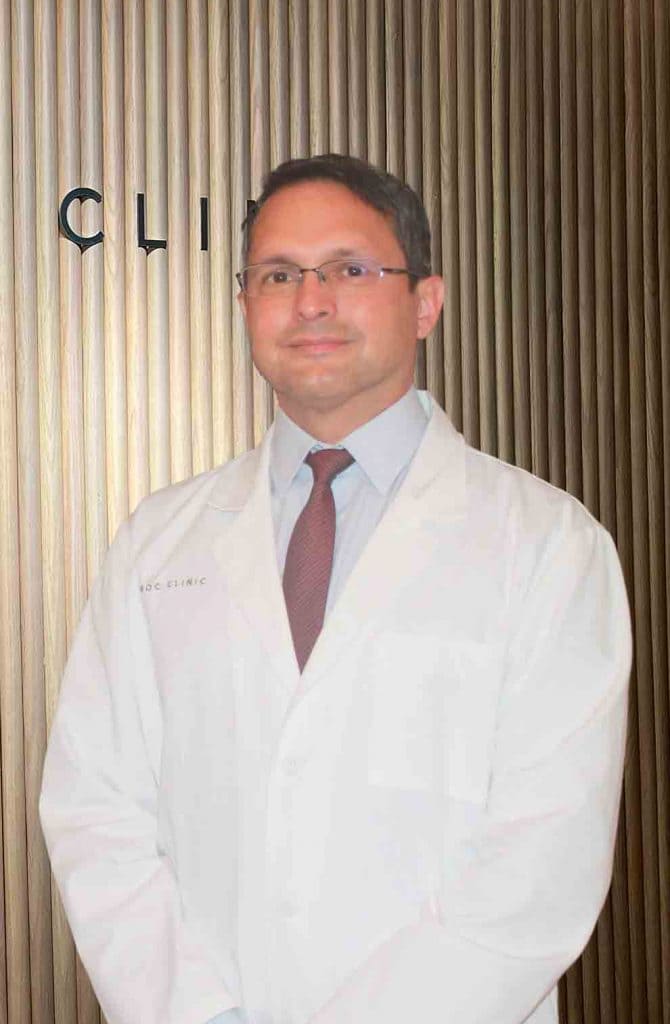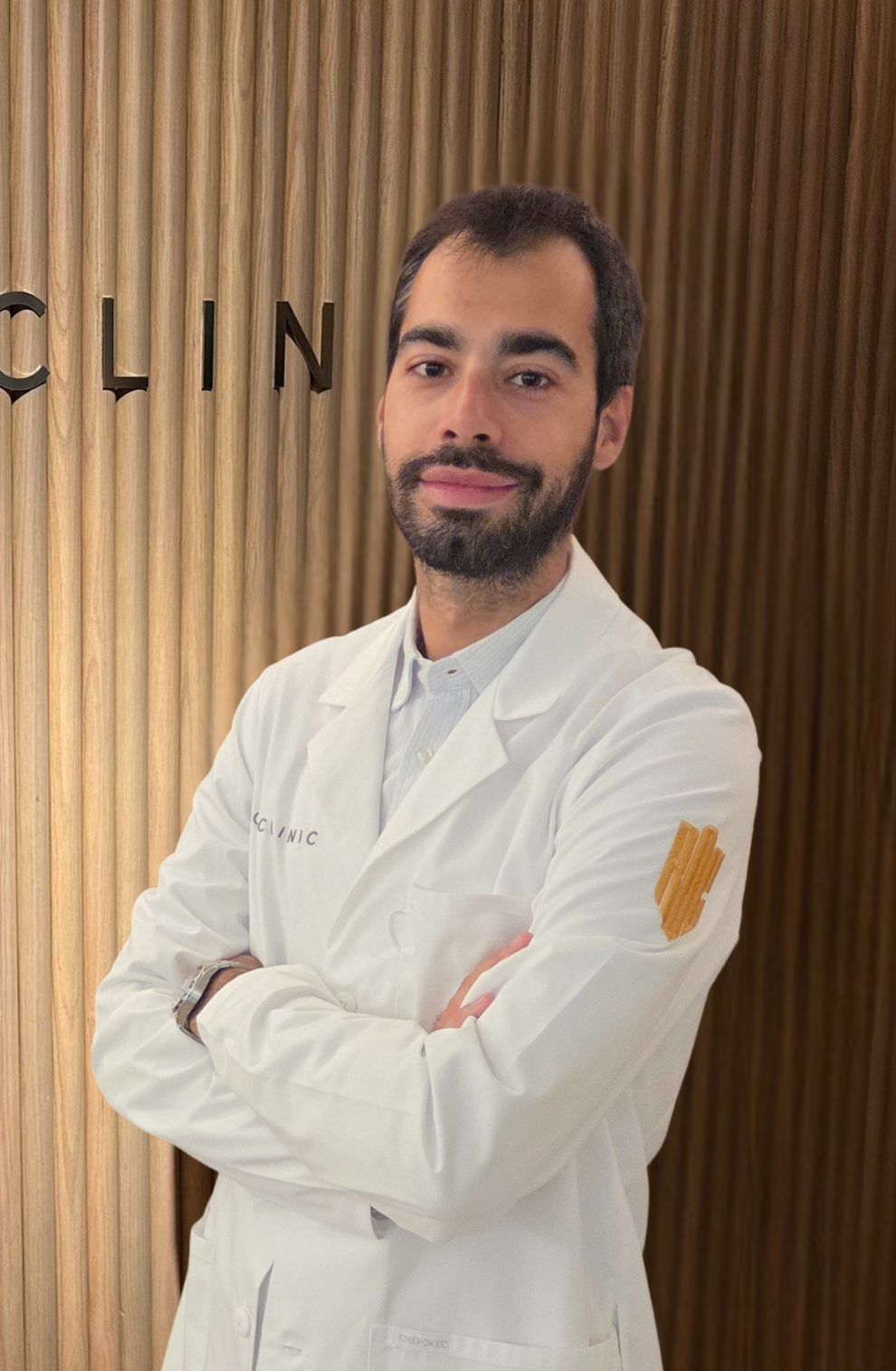Da Vinci Robot
This technology is indicated to treat patients with oncological and functional pathologies, allowing the surgeon to perform complex interventions with less technical difficulty and greater efficiency thanks to its precision and versatility.


What is the Da Vinci Robot?
The Da Vinci robot is a state-of-the-art surgical system designed to perform complex interventions in a minimally invasive manner, with millimetric precision.
Although it is known as a "robot", it does not operate autonomously. It is the surgeon who controls its movements at all times through an ergonomic console, from which he directs each gesture with extreme precision. The system translates these movements into millimetric actions executed by robotic arms that eliminate the hand's natural tremor and allow a much wider range of movement than that of a human wrist.
One of the most revolutionary elements of the Da Vinci is its three-dimensional high-definition (HD 3D) vision system, which magnifies the image of the surgical field up to 10 times. This allows the surgeon to see the smallest anatomical structures with total clarity, which is especially valuable in urological procedures, where very delicate areas such as the prostate, the erector nerves or the pelvic blood vessels are involved.
Unlike other techniques such as laparoscopy, where the movement of the instruments is limited, robotic surgery is capable of reproducing the degrees of freedom of a hand, conferring a mobility far superior to that of older surgical techniques, which increases the quality standards of minimally invasive surgery. The Da Vinci robot improves the surgeon's hand gestures and reproduces them with millimetric accuracy, reducing tremor, improving ergonomics and making it possible to scale the magnitude of surgical movements. This technology also enables high-definition 3D vision, with high image quality that enhances the identification and treatment of tissues.
The result is a more precise, safer and less aggressive surgery, which reduces complications, accelerates recovery and improves functional and oncological results.
In which urological surgeries is the da Vinci robot used?
The da Vinci robot can perform oncological and functional interventions such as:
- Prostate cancer. The da Vinci robot is used to perform minimally invasive surgery for prostate cancer. This technology makes it possible to perform a radical prostatectomy, i.e. the removal of the prostate and seminal vesicles (glands that store semen), with greater precision, preserving, in tumors located within the prostate, the nerves and anatomical structures associated with erection and urinary continence. The Da Vinci robot allows better results than the usual non-robotic techniques.
- Kidney cancer. Total removal of the organ can be performed in cases of larger tumors or partial removal, keeping most of the kidney.
- Bladder cancer. Patients with a diagnosis of bladder carcinoma with invasion of the muscular layer or those who, with other types of tumors, require total bladder removal can be operated through robotic surgery, allowing, in addition, the reconstruction of the urinary tract by means of a new bladder from inside the patient's body or, when this is not possible, to make a conduit to be able to drain urine from the kidneys.
- Lymph nodes. In those patients who, as a consequence of testicular tumors or other retroperitoneal tumors, need to remove the lymph nodes of the abdomen, robotic surgery offers great precision and, being a highly complex surgery, this surgical technique will maximize the results, decreasing possible complications.
- Functional pathologies such as a congenital malformation that causes dilatation of the renal pelvis and consequent deterioration of renal function, or prolapse of the bladder through the vagina (cystocele) can be surgically corrected with robotic surgery.
The new Da Vinci Single Port (SP) model
The new surgical robot Da Vinci Single Port (SP) is the most advanced version of the Da Vinci system, designed to perform minimally invasive surgery through a single incision or single entry port. Unlike previous models that required multiple arms and access ports, the Da Vinci SP concentrates all robotic tools into a single entry port, allowing for even less invasive surgery.
The da Vinci SP provides significant advantages in the following urological procedures:
- Prostatectomy: removal of the prostate with maximum precision and minimal invasion.
- Cystectomy: surgery for the treatment of bladder cancer with optimized recovery.
- Partial or total nephrectomy: procedure to preserve or remove the kidney in a less aggressive manner.
- Reconstructive surgery of the urinary tract: Treatments for urethral strictures (urethral narrowing) and other complex urological pathologies.
At ROC Clinic we have the Da Vinci Single Port surgical robot in our therapeutic arsenal, being the first in Spain to operate with this technology that allows us to make a very important qualitative leap in minimally invasive surgery.
- Greater surgical precision
- Better functional results.
- Reduction of complications.
- Small incisions.
- Less bleeding.
- Less postoperative pain.
- Reduction of hospital stay.
- Faster return to normal activities.
At ROC Clinic we have a team of experts in robotic surgery, with more than 10 years of experience in using this technology. Pioneers in the use of the da Vinci robotic system in Spain, our specialists perform robotically all cystectomies (removal of the bladder), radical prostatectomies (removal of the prostate) and partial nephrectomies (removal of part of a kidney).
+13
years of experience
+ 200 radical robotic prostatectomies
We have a training program in robotic surgery for urologists.
Newsof ROC Clinic on Da Vinci Robot
Research
High-Intensity Focused Ultrasound (HIFU) for Prostate Cancer – Step-by-Step Technique
They ask us in the Consultation
When is the use of robotic surgery recommended?
Robotic surgery is recommended in a variety of situations where its advantages can significantly improve patient outcomes compared to traditional open or laparoscopic surgery. It is considered especially beneficial in complex procedures where high precision and surgical dexterity are required in confined spaces, in patients with comorbidities and/or when urinary or erectile function is sought to be preserved.
What should I do before the operation with the Da Vinci robot?
Before the operation, you will be scheduled for a preoperative examination (electrocardiogram, chest x-ray and blood tests with coagulation) and for a visit with the anesthesiologist who will give the go-ahead for the operation.
What precautions should I take when I am discharged after the Da Vinci?
When he is discharged he will go home with a catheter in place. The first few days you will have to rest and you will be able to combine it with gentle activity. After 7-10 days the tube will be removed. From that moment on, you will be able to return to normal life with the logical precautions of having undergone surgery: do not exert yourself, do not lift weights, etc.
Does the da Vinci robot operation require general anesthesia?
Yes, it is a procedure that requires general anesthesia and the operation can last between 2 and 4 hours approximately.
Team of the Da Vinci Robot unit


 +34 912 627 104
+34 912 627 104 Contact
Contact














